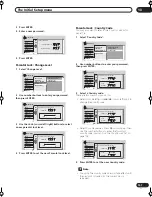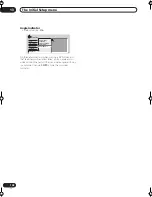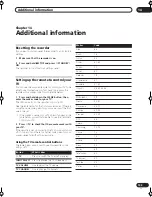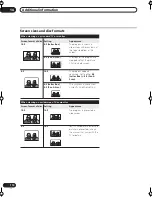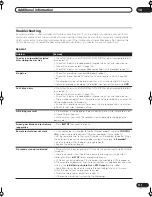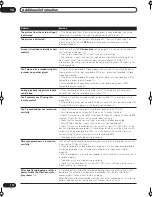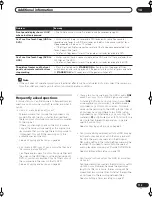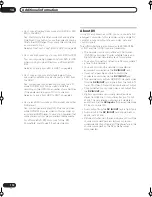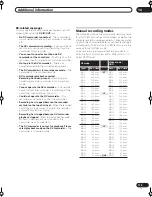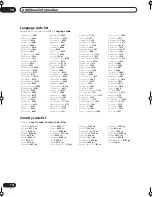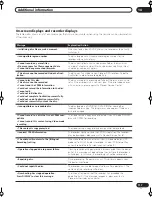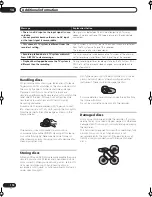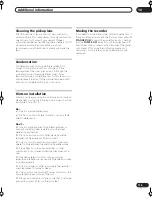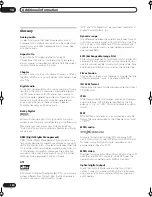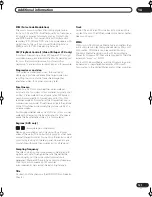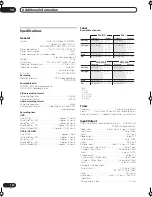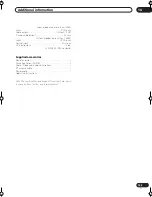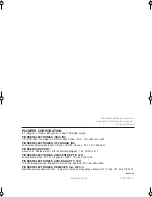
Additional information
14
121
En
PCM (Pulse Code Modulation)
The most common system of encoding digital audio,
found on CDs and DAT. Excellent quality, but requires a
lot of data compared to formats such as Dolby Digital
and MPEG audio. For compatibility with digital audio
recorders (CD, MD and DAT) and AV amp/receivers with
digital inputs, this unit can convert Dolby Digital and
MPEG audio to PCM. See also
Digital audio
.
PBC (PlayBack Control) (Video CD/Super VCD only)
A system of navigating a Video CD/Super VCD through
on-screen menus recorded onto the disc. Especially good
for discs that you would normally not watch from
beginning to end all at once—karaoke discs, for example.
Progressive scan video
Also called non-interlaced video, this method of
displaying a picture updates all the lines in one pass,
resulting in a more stable, flicker-free image than
interlaced video (for a given scanning rate).
PureCinema
Video on a DVD disc may be either video material
(originally shot on video) or film material (originally shot
on film). Video material has a frame rate of 30 frames/
second, compared to 24 frames/second for film. This
recorder converts film material to 60 frames/second (in
progressive scan mode). PureCinema adjusts the picture
so that it matches more closely the picture quality of a
cinema screen.
You can see whether video on a DVD disc is film or video
material by displaying the transfer rate. If a ‘#’ appears
above the transfer rate display, it is film material.
Regions (DVD only)
(example region code marks)
Regions associate discs and players with particular
areas of the world. This unit will only play discs that have
compatible region codes. You can find the region code of
your unit by looking on the rear panel. Some discs are
compatible with more than one region (or all regions).
Sampling frequency
The rate at which sound is measured to be turned into
digital audio data. The higher the rate, the better the
sound quality, but the more digital information is
generated. Standard CD audio has a sampling frequency
of 44.1kHz, which means 44,100 samples
(measurements) per second. See also
Digital audio
.
Title
A collection of chapters on a the HDD/DVD disc. See also
Chapter
.
Track
Audio CDs and Video CDs use tracks to divide up the
content of a disc. The DVD equivalent is called a chapter.
See also
Chapter
.
WMA
WMA is short for Windows Media Audio and refers to an
audio compression technology developed by Microsoft
Corporation. WMA data can be encoded by using
Windows Media Player version 9 or Windows Media
Player for Windows XP. Files are recognized by their file
extension “.wma” or “.WMA”.
Microsoft, Windows Media, and the Windows logo are
trademarks, or registered trademarks of Microsoft
Corporation in the United States and/or other countries.
1
ALL
RA_h US.book 121 ページ 2004年7月8日 木曜日 午後4時26分

